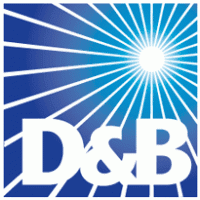Everyone’s Busy.
But Nothing Moves Without You.
It’s not just burnout. It’s wasted effort.
You’re investing in people who stay active—but don’t create outcomes.
CQ reveals who actually moves the business forward
so you can focus on the drivers and finally lead without pushing.
Is this what you’re dealing with?
-
You’re the one chasing updates while others wait to be told.
-
You’ve promoted “potential”. But performance never showed up.
-
You’ve run training, but no one’s behavior actually changed.
-
You can’t tell who’s pushing—and who’s just along for the ride.
-
Your team looks full—but feels like it’s running on 30%.
If that stings, good. You’re not alone.
That’s leadership drag. And if you don’t cut it—it compounds.
Here’s how CQ creates a signal you can trust
Here’s how CQ creates a signal you can trust.
| Pain Statement | What It Feels Like | What CQ Actually Does |
|---|---|---|
| “I’m tired of carrying the team.” | Resentment. Burnout. Everything funnels back to you. | Pinpoints who’s self-propelling—and who’s just along for the ride. |
| “I can’t tell who’s ready to step up.” | Second-guessing. Constant hesitation. | Surfaces the hidden behavior patterns that reveal who’s ready for more. |
| “I keep promoting the wrong people.” | Regret. Political debt. Lost time. | Shows who’s actually growing—not just who talks well or sticks around. |
| “Turnover is killing our momentum.” | You finally get traction—then lose your best player. | Flags who’s likely to stay, stall, or split—before they do. |
| “Training isn’t working.” | Big spend. No change. Quiet quitting in disguise. | Measures actual behavior shifts post-training—not just sentiment. |
| “We’re growing fast, but I don’t know if my team can.” | Anxiety. Uncertainty. Risk avoidance. | Maps stretch-readiness so you can push who’s ready—and sideline who’s not. |
| “Everything still bottlenecks through me.” | Overfunctioning. Trapped in the weeds. | Identifies who can run without you—so you stop being the failsafe. |
❌ Why You Still Can’t See It
360s are politics in disguise.
Nobody tells the full truth when careers are on the line.
Performance reviews look backward.
They tell you what happened—not what’s about to break.
Engagement scores measure how people feel—not what they’ll do.
Morale can be high right before momentum dies.
Gut feel works—until your last ‘high-potential’ hire flames out.
You don’t need more feedback loops.
You need signal you can bet on.
Introducing Commitment Quotient
Most systems give you traits, scores, or vibes.
CQ gives you behavior—in real time, under real pressure.
It doesn’t just assess. It tracks what people actually do after they commit. Not potential. Not polish. Just follow-through that compounds—or fails.
CQ maps three core traits that fuel leadership at every level:
-
Initiative — Acts without being asked
-
Applied Grit — Pushes through when it’s hard
-
Learnability — Evolves fast with feedback
Then it goes further: CQ turns insight into action. You see the behavior over 30 days. You know who follows through—and who falls off.
So you can:
-
Hire without guessing
-
Promote with proof
-
Coach the right people
-
Keep your best before they vanish
This isn’t a leadership test. It’s a behavior system that exposes commitment in motion—across your real team, in your real work.
It’s not perfect. But it’s predictive—and made for the pressure you’re actually under
One System. Three Suites.
No More Guessing.
CQ turns behavioral signal into leadership leverage—
across every critical decision: hiring, developing, and leading.
HIRE RIGHT
Bad hires don’t just cost money—they slow everything. This suite helps you cut through charm, polish, and pedigree—and find who actually follows through.
| Module | What It Does | Use It When… |
|---|---|---|
| Align | Map behavioral needs to the real pressures of the role. | You need clarity on what commitment looks like in this specific seat. |
| RoleFit | Build job descriptions that attract commitment-first candidates. | You’re writing roles that must drive results, not just fill seats. |
| Screen | Score every candidate on CQ traits and total commitment signal. | You want to filter out polish and surface who actually follows through. |
| Questions | Generate interview questions tailored to role, resume, and signal score. | You need a qualitative check on the CQ score—and want to confirm behavior, not charisma. |
| FitCheck | Calibrate the final decision using job fit, signal data, and real interaction. | You need to make the call—with full behavioral context, not gut feel. |
GROW FAST
Your best people aren’t loud. They’re compounding quietly—until they leave. This suite helps you see them, grow them, and keep them.
| Module | What It Does | Use It When… |
|---|---|---|
| Signal | Reveal commitment levels across the team (transparent, not anonymous). | You need to separate drag from drive—before it tanks morale or momentum. |
| Profile | Unpack each person’s behavioral patterns and growth trajectory. | You’re deciding who to coach, stretch, or shield from burnout. |
| Prove | Run a 6-week behavioral sprint with your top CQ scorers. | You want to double down on people showing proof—not just promise. |
| Better Every Day | Keep high-CQ team members engaged with ongoing, measurable growth. | You’re building a culture where the best don’t stagnate or stall out. |
LEAD CLEARLY
If your leadership team isn’t aligned, you’re leading through fog. This suite gives you a shared lens—and clears the way.
| Module | What It Does | Use It When… |
|---|---|---|
| Signal | Show commitment levels across your leadership team (clear, not anonymous). | You need to spot misalignment—or passive sabotage—fast. |
| Align | Get your top team synced on CQ behaviors, standards, and language. | You’re tired of mixed signals, uneven expectations, or culture drift. |
| Anchor | Equip the founder to lead with clarity, safety, and repeatable behavioral signals. | You’re still the cultural engine—and you need to scale your clarity. |
What makes CQ different?
Why Commitment > Potential
Potential is a guess. Commitment is a signal.
Most hiring and development systems measure past performance or future potential.
But those don’t tell you what someone will actually do next.
Why commitment wins:
-
Potential can look good on paper—and still disappoint
-
Performance is backward-looking
-
Commitment shows up in the next challenge, not the last one
CQ tells you who will step up—and who’s coasting.
CQ scores the traits that fuel consistent action—especially under pressure.
We’re not measuring personality or experience.
We’re measuring growth behaviors:
| Trait | Signal |
|---|---|
| Initiative | Acts without being asked. Doesn’t wait to be told. |
| Applied Grit | Keeps going when it’s hard. Follows through under pressure. |
| Learnability | Takes feedback seriously. Adapts fast and evolves. |
These aren’t soft skills—they’re survival traits for small teams.
What High-Commitment
Looks Like
You’ve seen it. You just haven’t had a way to measure it—until now.
High-commitment team members:
-
Spot and solve problems early
-
Show up prepared and follow through
-
Adjust fast when given feedback
-
Keep improving even when no one’s watching
-
Don’t need micromanagement—they self-manage and self-correct
These are your hidden gems. CQ helps you find them.
High-commitment isn’t about being nice, loyal, or compliant.
CQ is not:
A personality test
A loyalty meter
A feel-good engagement score
A resume filter
And it’s definitely not:
“Just another leadership framework”
CQ doesn’t tell you how people feel. It shows you how they behave.
❌ What It’s Not
What if someone scores low?
A low CQ score doesn’t mean someone’s broken—or even disengaged.
It means their current behaviors aren’t compounding initiative, applied grit, or learnability. And that’s useful. Because not everyone needs to be a driver.
In fact, some of your best performers will score low—and that’s great. They’re specialists. Executors. Rock-solid in place.
CQ doesn’t tell you to let someone go. It tells you who to bet on for growth—and where to protect what’s working.
Skills can be trained. Commitment can’t be faked.
In fast-moving companies, you don’t have time to guess who’s ready.
And you can’t afford to coach people who never step up.
High-CQ people grow fast. Low-CQ people drain momentum.
CQ gives you a system to tell the difference—before you make your next big bet.
🎯 Why It Matters
Frequently Asked Questions
❓ What does a low CQ score mean?
A low CQ score doesn’t mean someone is lazy or disengaged.
It means their current behaviors—like initiative, applied grit, or adaptability—aren’t showing up at a level that signals readiness for leadership investment.
It’s not judgment. It’s visibility.
❓ Can someone improve their CQ score?
Yes. CQ scores reflect behavior—not personality.
If someone begins taking more ownership, responding to challenge, or learning through feedback, the score moves.
It’s not fixed. It’s earned.
❓ Is CQ a personality test?
No. Personality is stable. CQ is behavioral.
It doesn’t measure traits—it measures what people do in a real work environment over time.
❓ What does CQ actually measure?
Three things:
-
Initiative: Do they take action without being pushed?
-
Applied Grit: Do they stay engaged when things get hard?
-
Learnability: Do they adjust based on feedback?
That’s it. Clean. Observable. Trackable.
❓ Is CQ used to make hiring or firing decisions?
CQ is a decision support tool—not a verdict.
It helps leaders invest energy where it creates momentum.
It doesn’t tell you who to fire. It shows you where behavior is strong, and where it’s not—so you can lead smarter.
❓ How is CQ scored?
CQ is calculated based on behavioral inputs across time.
Scores are classified into three zones:
-
High: Shows strong, consistent commitment behaviors
-
Mid: Inconsistencies—some commitment, some hesitation
-
Low: Commitment behaviors are currently weak or missing
Everyone emits signal. CQ reads it.
We are taking all the experience with these companies,
and bringing it to your small business.








